Plants of the Castlemaine District.
Water Ferns - native (Blechnum species)
Water Ferns were moderately common. They grew along water races, in seepage from water races, and down mine shafts. Almost all of the local records are from over a quarter of a century ago.
Water ferns differ from most other ferns in that the fronds are once-divided, and the fertile fronds differ from the barren fronds. The fertile fronds have narrower leaflets that have a shrivelled appearance.
The fronds. The size of the leaflets on the middle and lower parts of the fronds, and how the leaflets are attached to the stalk help separate the species.
Family: Blechnaceae.
Barren and fertile fronds dissimilar. Some leaflets shortly stalked.
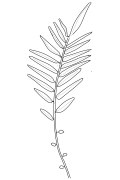 Soft Water-fern (Blechnum minus) All leaflets of barren fronds shortly stalked (except perhaps a few at the tip).
Soft Water-fern (Blechnum minus) All leaflets of barren fronds shortly stalked (except perhaps a few at the tip).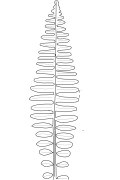 Ray Water-fern (Blechnum fluviatile) Lower leaflets of barren fronds stalked, middle leaflets broad-based.
Ray Water-fern (Blechnum fluviatile) Lower leaflets of barren fronds stalked, middle leaflets broad-based.Barren and fertile fronds dissimilar.
All leaflets attached with broad bases.
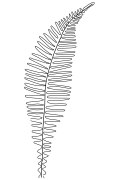 Fishbone Water-fern (Blechnum nudum) Leaflets of barren fronds straight. Leaf stalks black and shiny.
Fishbone Water-fern (Blechnum nudum) Leaflets of barren fronds straight. Leaf stalks black and shiny.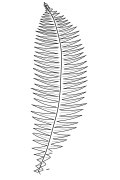 Lance Water-fern (Blechnum chambersii)Leaflets of barren fronds curved. Leaf-stalks pale brown.
Lance Water-fern (Blechnum chambersii)Leaflets of barren fronds curved. Leaf-stalks pale brown.Barren and fertile fronds similar
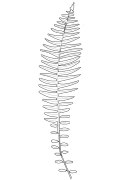 Common Rasp-fern (Blechnum parrisiae) Leaf stalks are rough, dark coloured and with coloured scales.
Common Rasp-fern (Blechnum parrisiae) Leaf stalks are rough, dark coloured and with coloured scales.